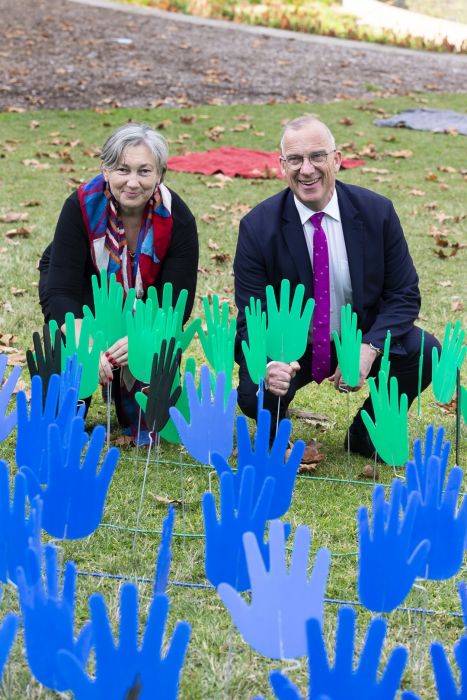
Quad Lawns or Kangaroo Grounds?
On the Quadrangle clocktower, there is a unique kangaroo grotesque jutting from the sandstone. Why a kangaroo? Well, before the ibises took over, the site where the University sits was full of them. Early settlers even named the area the Kangaroo Grounds. Local Aboriginal people hunted kangaroo on the grasslands, and fished and camped at the swamps, creeks and rivers that crisscrossed the region.
Charles Perkins and the Freedom Rides
In 1966 Charles Perkins became the first Aboriginal man to graduate from an Australian university. He also led a group of students from the University of Sydney on a Freedom Ride in 1965. Touring through NSW, the Freedom Riders protested discrimination against Aboriginal people in small towns across the state to expose discrepancies in living, education and health conditions among the Aboriginal population. The University recently acknowledged those who took part with the installation of a commemorative plaque in front of the Great Hall. The Charles Perkins Centre also owes its name to our revered alumnus, and shares his philosophy of collaboration, inclusivity and challenging the status quo.
Native plants on campus
This area was also rich with nourishing flora. The long-leaf mat rush (Lomandra longifolia), that grew on Kangaroo Grounds and currently grows in front of our engineering precinct, was a valued material for making baskets. The sap of the red bloodwood trees (Corymbia gummifera), that run along the tennis courts on the Darlington Campus, were extracted to treat fishing lines to stop them fraying. You can find these plants and follow other native plant trails on the Campus flora app.
Fishing and hunting at Cadigal Green
Cadigal Green was formerly the marsh of Blackwattle Creek that was a source of fresh water for Aboriginal people, and a place for fishing for many generations. Bodies of water on the campus were not only essential givers of life, but had important ceremonial and spiritual connections. The swamplands were an important source of food as the forests gave way to low-lying scrub, giving the Cadigal people the opportunity to hunt wild game. There have been two archaeological finds on campus along the old creek – the first found at the site of Fisher Library and the other at Maze Crescent that runs alongside Cadigal Green.
This year, for the first time, we held our National Reconciliation Week flag raising ceremony and Hands of Reconciliation on the Cadigal Green, and invited the local community to join us to reflect on the important ceremonial and spiritual connections the land held for its original custodians, the Aboriginal history of the University and what it means for us now and into the future. To those who joined us, thank you. We hope you will remember the ancient history of this special place next time you walk through the campus. If you wish to receive updates via our campus news, you can now subscribe on the University’s news page here.
With thanks to Billy Griffiths for information about the Kangaroo Ground and local flora, and Barani for details about Blackwattle Creek.




